Sinus Lift Surgery Swelling: Your Complete Guide to Managing Post-Surgical Facial Swelling

You've just undergone sinus lift surgery, expecting to wake up feeling accomplished about taking this important step forward. Instead, you catch your reflection and discover significant facial swelling that's more extensive than you anticipated. Your cheeks appear noticeably enlarged, and you might be wondering if this level of swelling is normal.
Here's the reassurance you need: extensive swelling after sinus lift surgery is completely normal and evidence that your body is responding appropriately to the surgical process. Most patients aren't adequately prepared for how significant this swelling can be or how long it takes to fully resolve.
Understanding exactly why this happens and knowing how to manage it effectively transforms this experience from a source of anxiety into a manageable part of your recovery journey. This guide explains the science behind post-sinus lift swelling, provides a realistic timeline for resolution, and offers proven strategies to support optimal healing.
Understanding Why Sinus Lift Surgery Creates Extensive Swelling
Sinus lift surgery triggers more extensive swelling than many other facial procedures due to unique anatomical factors in the maxillary sinus region.
Vascular Network and Tissue Structure: The sinus area contains an extremely dense network of blood vessels surrounded by loose, accommodating tissue. When surgery disrupts these vessels, inflammatory fluid floods the tissues faster than your drainage systems can process it, while the loose tissue structure offers minimal resistance to extensive fluid accumulation.
Gravitational and Drainage Challenges: Your sinuses sit high on your face, meaning gravity works against swelling resolution throughout the day. Inflammatory fluids naturally migrate downward, pooling in your lower cheeks, while your lymphatic system becomes overwhelmed by the volume of fluid requiring clearance.
Circulation Impact: Sinus procedures often affect normal nasal breathing patterns, which can influence circulation and drainage, potentially contributing to prolonged swelling.
These factors explain why sinus lift swelling is more extensive than other facial procedures and follows an extended but predictable resolution timeline.
Pre-Surgery Preparation: Setting the Foundation for Optimal Recovery
Strategic preparation in the weeks leading up to surgery can significantly influence both swelling severity and resolution speed through lifestyle optimization and targeted nutritional support.
Nutritional Optimization (2-3 weeks before): Your body needs time to build tissue levels of nutrients that support optimal inflammatory response. Focus on anti-inflammatory foods rich in vitamin C, omega-3s, and antioxidants while reducing processed foods and excess sodium.
Achieving therapeutic levels through food alone is challenging. Research shows it takes 7-14 days of enhanced supplementation to reach tissue saturation levels that meaningfully impact post-surgical swelling resolution. Pre-surgical nutritional preparation works by saturating your tissues with specific nutrients your body will need most during inflammatory resolution—essentially stocking your cellular warehouse before demand peaks.
Sulinu's Before + After Vitals addresses this challenge with enhanced absorption forms designed specifically for cosmetic surgery recovery. Starting specialized support 1-2 weeks before surgery builds the nutritional foundation needed for optimal swelling management from day one.

SHOP THE BEST SUPPLEMENTS FOR SINUS LIFT SURGERY SWELLING
Pre-Surgery Protocol (1-2 weeks before): Stop blood-thinning supplements as directed. Avoid alcohol completely, as it interferes with nutrient absorption and inflammatory regulation. Prioritize sleep quality and prepare your recovery environment with elevation supplies, ice packs, and nutritious foods. Take baseline photos for objective progress tracking.
Mental Preparation: Review realistic swelling expectations and ensure adequate support during the critical first week when swelling peaks and daily activities require assistance. Proper preparation often determines whether patients experience prolonged, uncomfortable swelling or more manageable recovery with faster resolution.
Sinus Lift Swelling Timeline: What to Expect
Days 0-3: Peak Swelling Phase
Swelling reaches maximum intensity around day 2-3. Expect swelling to extend beyond the surgical area to your lower eyelids, upper lip, and occasionally jawline and neck. Asymmetry is common and temporary. Daily activities require adaptation due to significant facial changes.
Days 4-10: Stabilization Period
Swelling plateaus and begins showing subtle improvement. Daily fluctuations become apparent—appearance may vary based on sleep quality, stress levels, and dietary choices. Progress feels frustratingly slow as changes become gradual.
Weeks 2-4: Noticeable Improvement Phase
Facial contours begin returning toward normal with week-to-week rather than day-to-day changes. Morning appearance typically shows the most improvement, with gradual swelling increase throughout the day. Confidence about social situations typically improves during this window.
Month 1-3: Final Resolution Phase
Most obvious swelling resolves by one month, though subtle changes continue for several more months. Complete resolution typically occurs within 3-6 months, with individual timelines varying based on healing characteristics.
Swelling Management Strategies
Days 1-7: Critical Control Period
Ice and Elevation Protocol: Apply ice for 15-20 minutes every 2-3 hours during the first 48-72 hours, focusing on cheek areas. Maintain head elevation at least 45 degrees above heart level, especially during sleep. Use frozen vegetables wrapped in towels for better facial contouring.
Medication and Hydration: Take anti-inflammatory medications on schedule, even when not feeling pain. Maintain steady water intake (8-10 ounces every 2-3 hours) without excessive volumes. Avoid activities that increase facial blood pressure.
Weeks 1-4: Active Support Phase
Movement and Thermal Therapy: Gentle walking activates lymphatic drainage without cardiovascular stress. Once surgeon-approved, alternate warm compresses (15-20 minutes) with cold therapy to optimize circulation and prevent rebound swelling.
Sleep and Stress Management: Continue elevated sleeping throughout this phase. Manage stress through appropriate techniques, as chronic stress elevates cortisol and interferes with inflammatory resolution. Gradually increase activity while monitoring swelling response.
Nutritional Support for Optimal Swelling Resolution
Strategic nutrition directly impacts your body's ability to process inflammatory fluids and restore normal tissue architecture during sinus lift recovery.
The Post-Surgical Nutrition Challenge: Post-surgical recovery creates a significant gap between elevated nutritional needs and compromised absorption ability. Your body's demands for specific nutrients increase dramatically—sometimes 5-10 times normal levels—while medications, nasal congestion, and dietary restrictions limit your ability to obtain these nutrients from regular food sources.
Standard multivitamins fall short because they're designed for general wellness, not the intense demands of surgical healing and inflammatory resolution. This is where specialized post-surgical nutrition becomes crucial for optimal sinus lift swelling management.
Key Nutrients for Swelling Resolution
Research has identified four categories of nutrients that directly impact sinus lift swelling resolution:
Enhanced Vitamin C supports inflammatory resolution and collagen synthesis. Advanced formulations achieve 233% higher tissue retention compared to standard forms, ensuring adequate antioxidant support when facial swelling is most problematic.
Proteolytic Enzymes accelerate breakdown of accumulated inflammatory proteins that maintain swelling. Specialized enzyme complexes can double protein processing efficiency, directly impacting how quickly facial contours return to normal.
Hydrolyzed Collagen strengthens tissue architecture for better lymphatic drainage. Clinical studies show specialized collagen peptides can improve skin elasticity by up to 15% in four weeks, helping facial tissues return to normal contours more efficiently.
Biome Synbiotics support gut health disrupted by surgery and medications. This disruption triggers systemic inflammation that can add weeks to your sinus lift swelling timeline.
Comprehensive Approach While these nutrients can be obtained separately, timing, ratios, and absorption enhancement matter significantly for optimal results.
Sulinu's Before + After Vitals combines all four elements with enhanced absorption forms and precise ratios needed during sinus lift recovery.
This specialized approach provides therapeutic levels of swelling-reduction nutrients in forms your body can absorb when digestive function is compromised. Begin support 1-2 weeks before surgery, continue through acute swelling phases, and maintain through final resolution for optimal sinus lift swelling management.
BE PREPARED FOR YOUR SINUS LIFT WITH BEFORE + AFTER VITALS
Long-term Management and Final Resolution
Beyond two months, management focuses on patience and consistency. Occasional mild swelling flare-ups are normal, triggered by factors like poor sleep, stress, or dietary choices. These typically resolve within 24-48 hours.
Monitor how different activities affect residual swelling as you return to normal exercise routines. Complete resolution of all swelling-related changes can take 6-12 months, with monthly photos more useful than weekly assessments.
Red Flags: When to Contact Your Surgeon
Seek immediate professional attention for:
-
Sudden worsening swelling after initial improvement
-
Persistent fever above 101°F or signs of infection
-
Significant breathing difficulties or vision changes
-
Unusual discharge, increasing pain, or red streaking
-
Swelling that becomes increasingly asymmetrical over time
Trust your instincts—if something feels fundamentally different from expected healing patterns, contact your surgical team.
Frequently Asked Questions
Why does sinus lift swelling look more extensive than expected?
Sinus lift surgery creates uniquely extensive swelling due to the area's dense blood vessel network, loose tissue structure, and gravity working against drainage. The psychological impact feels more intense because facial changes directly affect your identity and cannot be hidden.
How long until swelling resolves completely?
Peak swelling occurs days 2-3, with noticeable improvement starting week 2. Most patients feel comfortable socially by weeks 3-4, though subtle swelling can persist for 3-6 months. Individual timelines vary based on healing characteristics and procedure extent.
Is asymmetrical swelling normal?
Yes, asymmetrical swelling is common initially due to surgical positioning, natural drainage differences, and sleeping positions. This typically resolves over 2-4 weeks. Contact your surgeon if asymmetry becomes more pronounced rather than improving.
Why does swelling fluctuate throughout the day?
Daily fluctuations occur because gravity affects fluid distribution, activity levels influence circulation, and factors like sleep quality, sodium intake, and stress temporarily affect fluid retention. Most patients look best in the morning and gradually become more swollen by evening.
Can I speed up swelling resolution?
While you cannot force rapid healing, you can optimize conditions through consistent elevation, strategic ice therapy, anti-inflammatory nutrition, gentle movement, quality sleep, and avoiding factors that worsen inflammation like alcohol and excess sodium.
When should I worry about persistent swelling?
Contact your surgeon if swelling suddenly worsens after improvement, becomes increasingly asymmetrical, persists without improvement after 6-8 weeks, or is accompanied by fever, vision changes, or signs of infection.
How can I track improvement when changes seem gradual? Take daily photos in consistent lighting rather than frequent mirror checks. Focus on weekly trends like decreased morning swelling and improved facial contours rather than expecting substantial daily improvements.
Does initial swelling severity predict recovery timeline?
Not necessarily. Some patients develop pronounced initial swelling that resolves quickly, while others have moderate initial swelling that persists longer. Recovery speed depends more on lymphatic drainage efficiency, adherence to management protocols, and individual healing characteristics.
Can stress really prolong swelling?
Yes. Stress elevates cortisol levels, which interferes with inflammatory resolution processes. Additionally, stress disrupts sleep quality crucial for overnight swelling reduction. Anxiety about appearance during recovery can create a cycle where worrying about swelling makes it last longer.
Do certain foods affect facial swelling?
Absolutely. High-sodium foods cause direct fluid retention, processed foods trigger inflammatory responses, and alcohol impairs lymphatic function. Conversely, anti-inflammatory foods provide compounds that actively support faster swelling resolution.
Medical Disclaimer
This content is provided for educational purposes only and should not replace professional medical advice. Every sinus lift surgery recovery is unique, influenced by surgical technique, individual health status, and adherence to post-operative instructions.
The information represents general guidelines and should never replace specific instructions from your surgeon. Post-operative care protocols vary significantly between surgeons and patient circumstances. Always prioritize your surgical team's guidelines over general online information.
Contact your surgeon immediately or seek emergency care if you experience concerning symptoms including excessive swelling, infection signs, severe pain, vision changes, or breathing difficulties. Do not delay professional evaluation based on online resources.
Mention of specific products or treatments does not constitute medical advice or endorsement. Consult healthcare providers before starting new supplements or treatments, as these may interact with medications or interfere with healing.
Surgical results and recovery experiences vary significantly, and no article can guarantee specific outcomes or timelines. Optimal results come from following surgeon instructions, maintaining realistic expectations, and maintaining open communication with your medical team.
Before + After Vitals
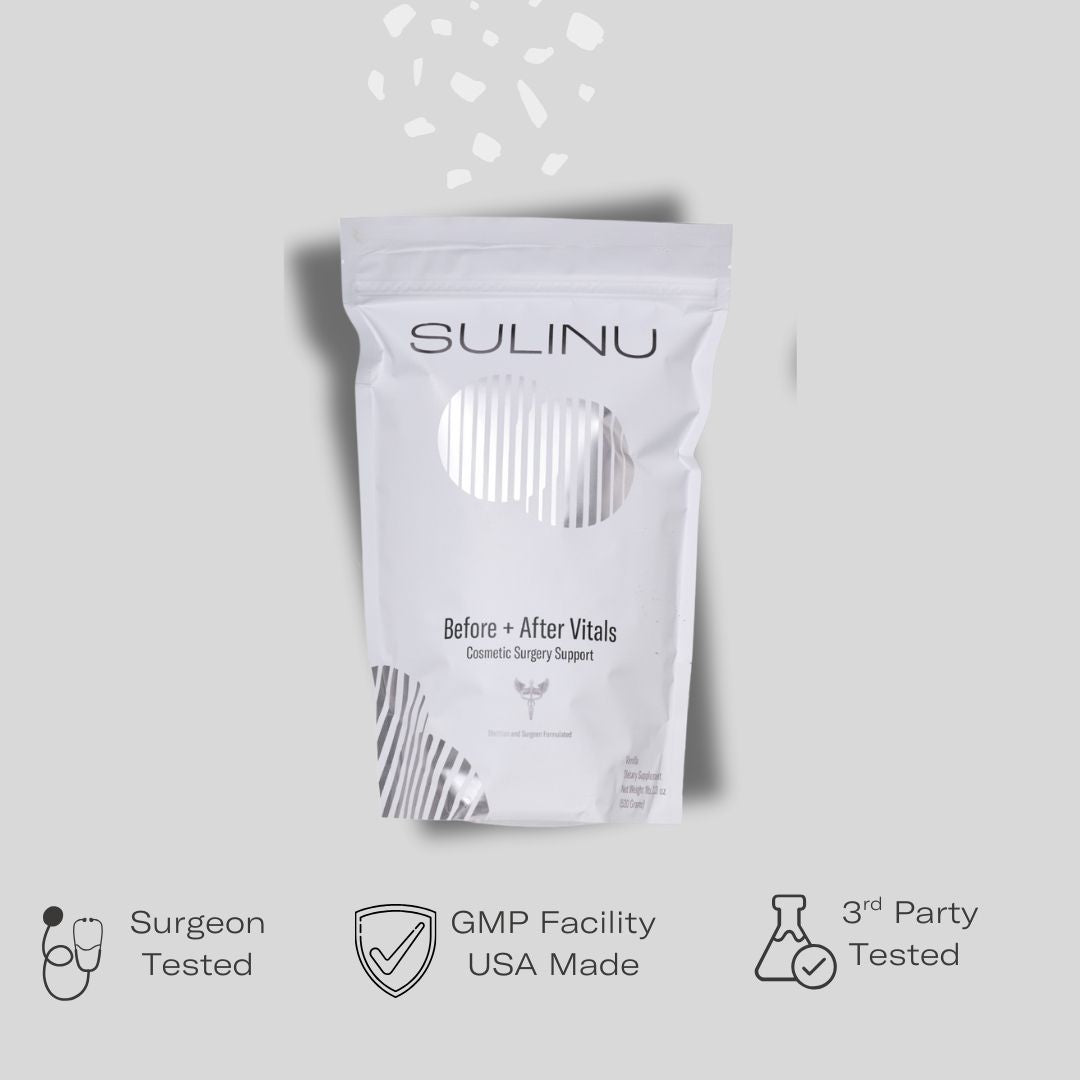
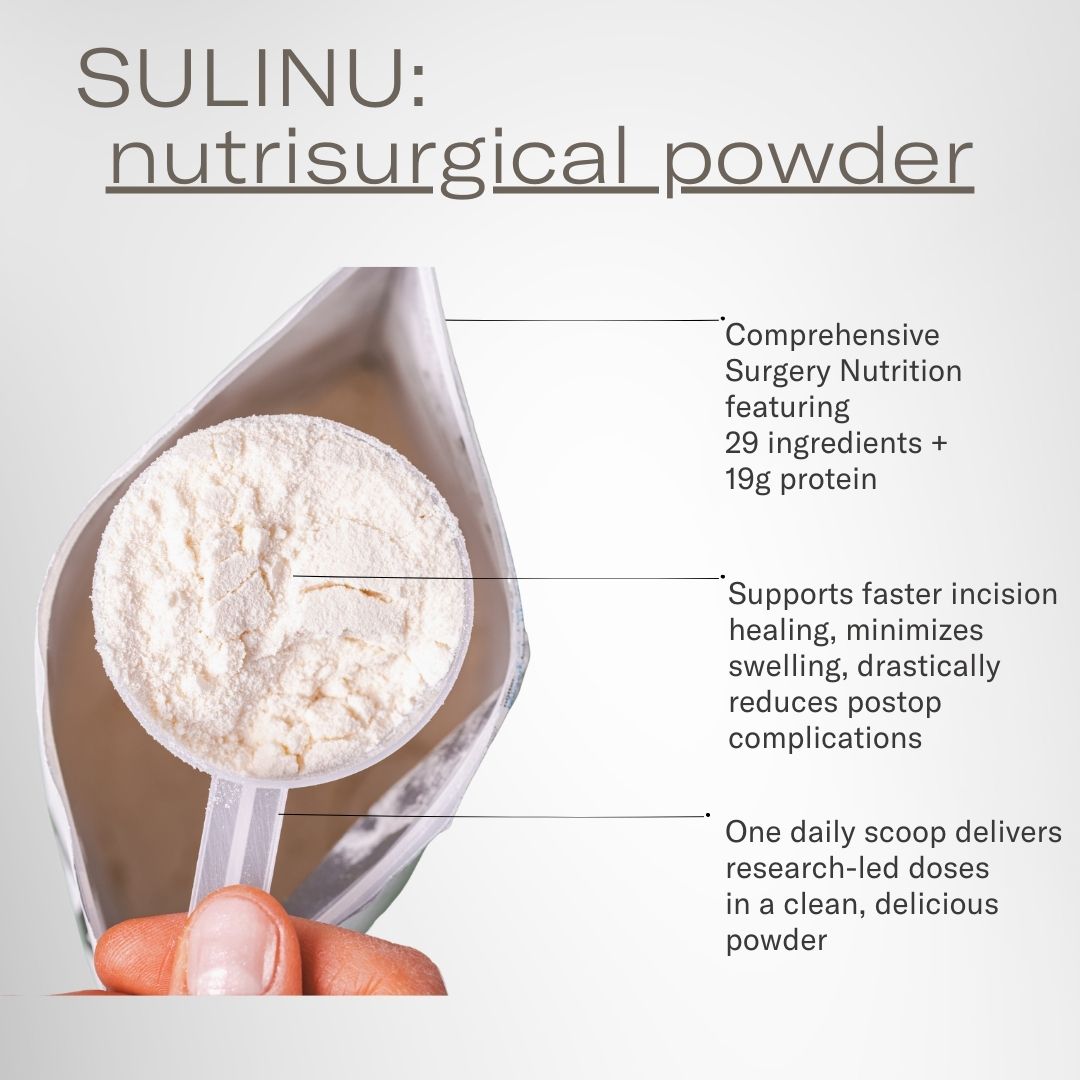
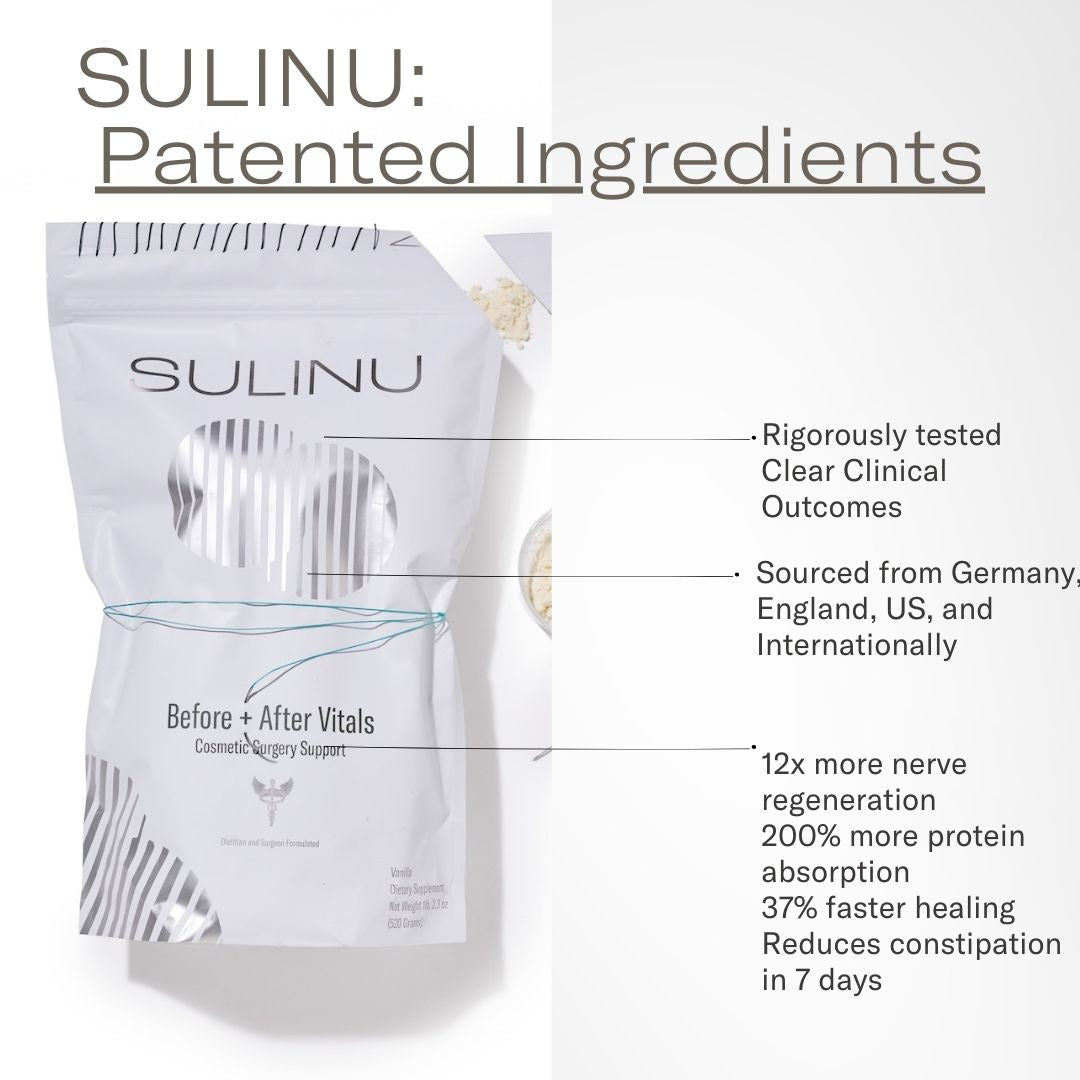

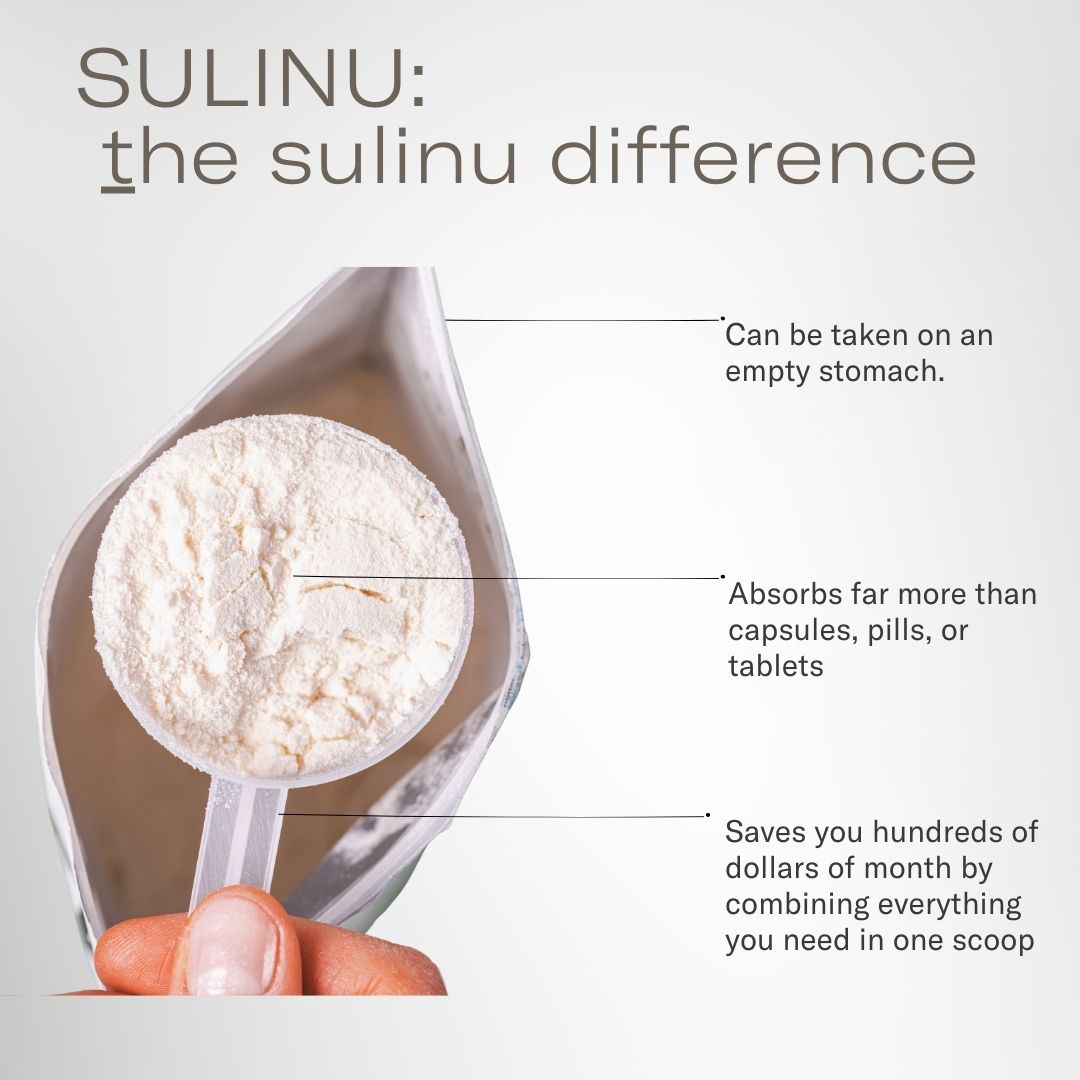
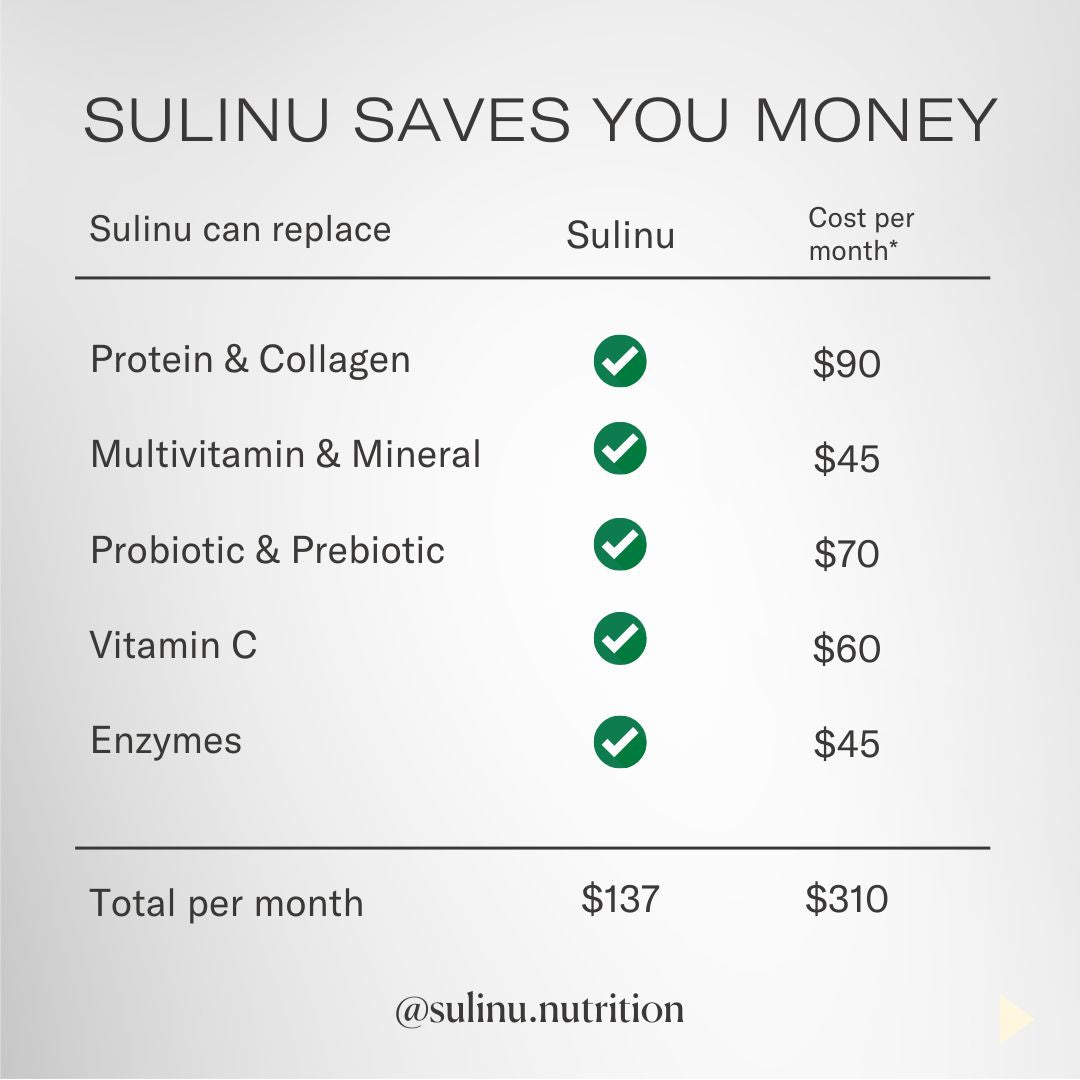
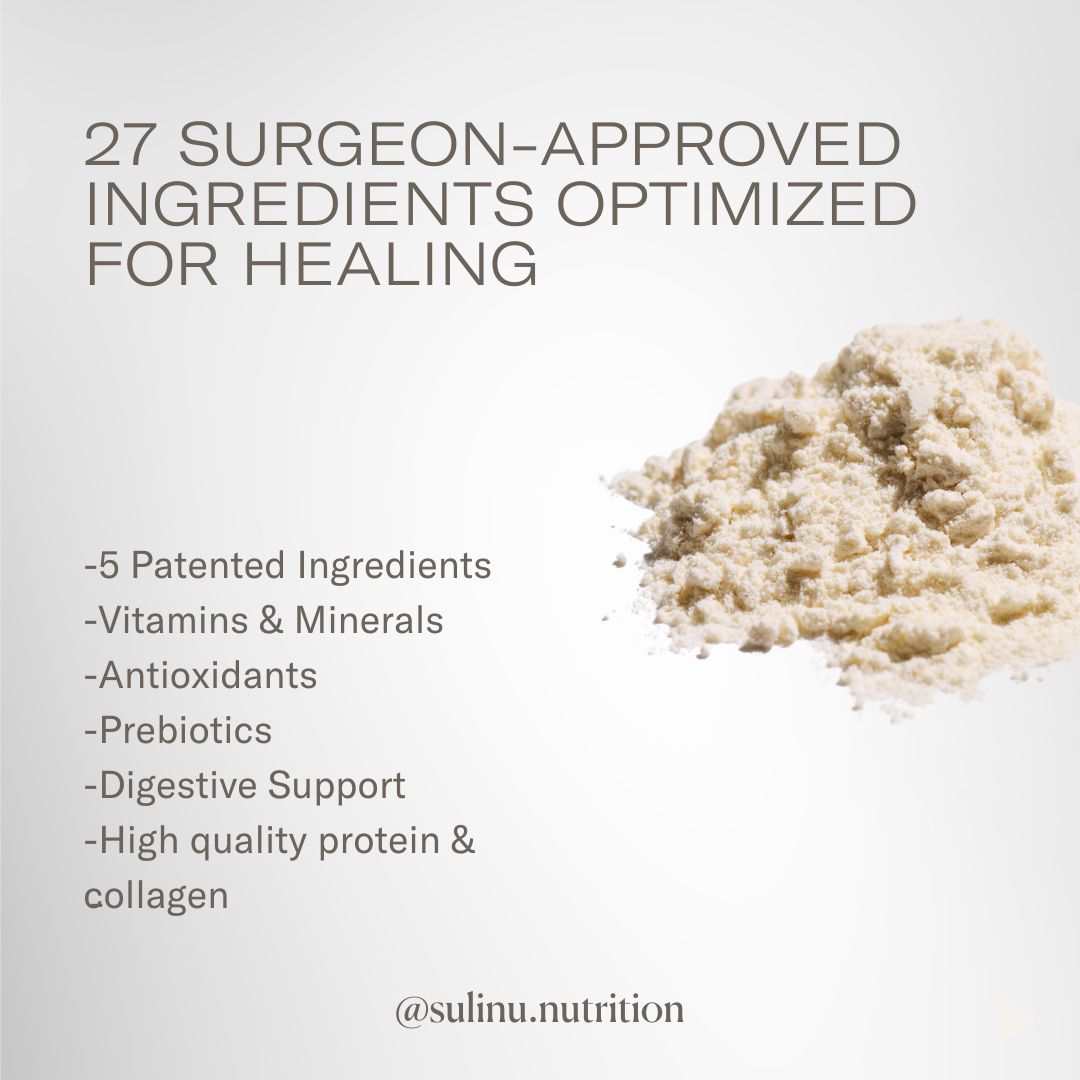
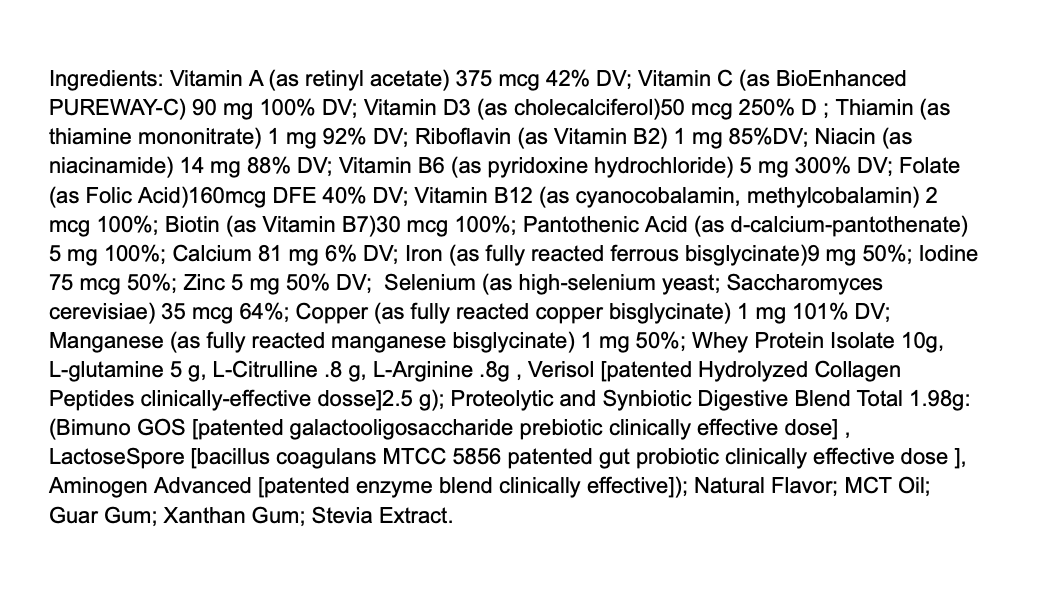
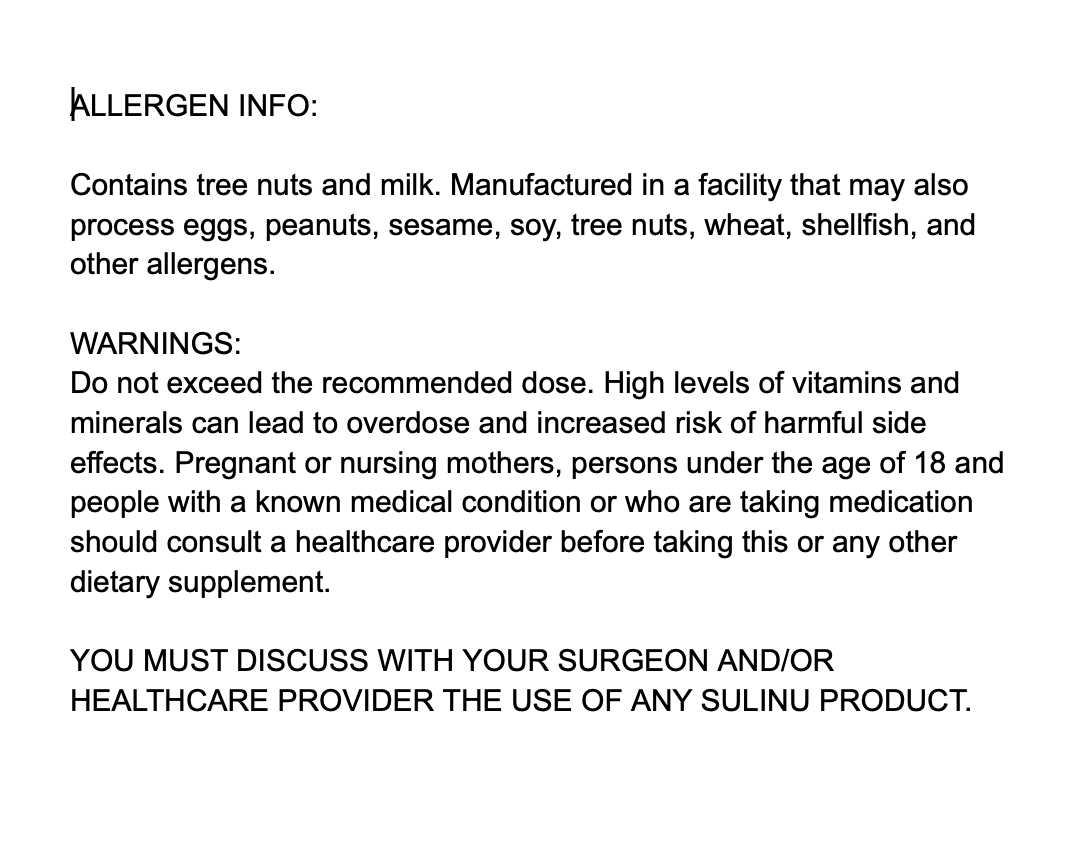



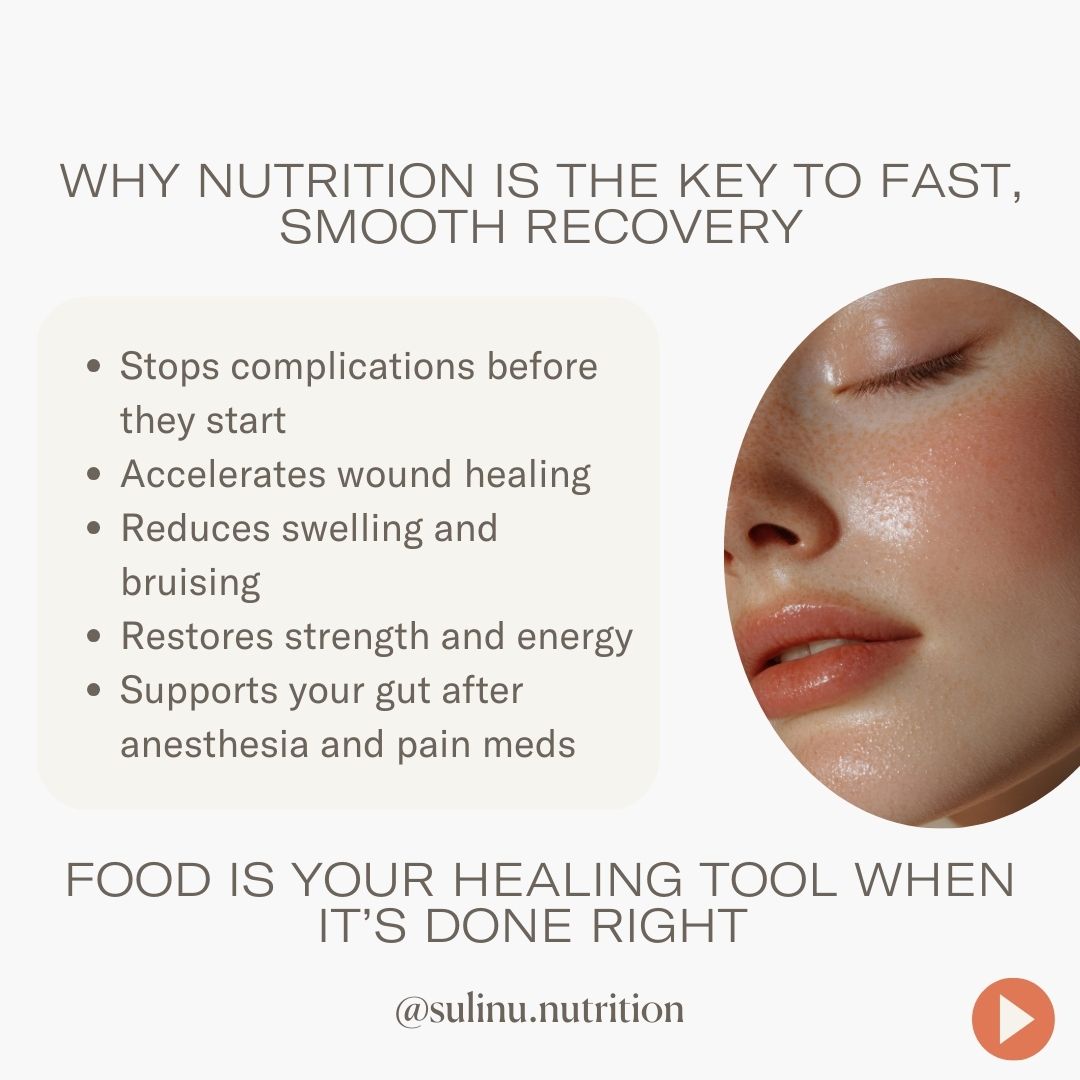
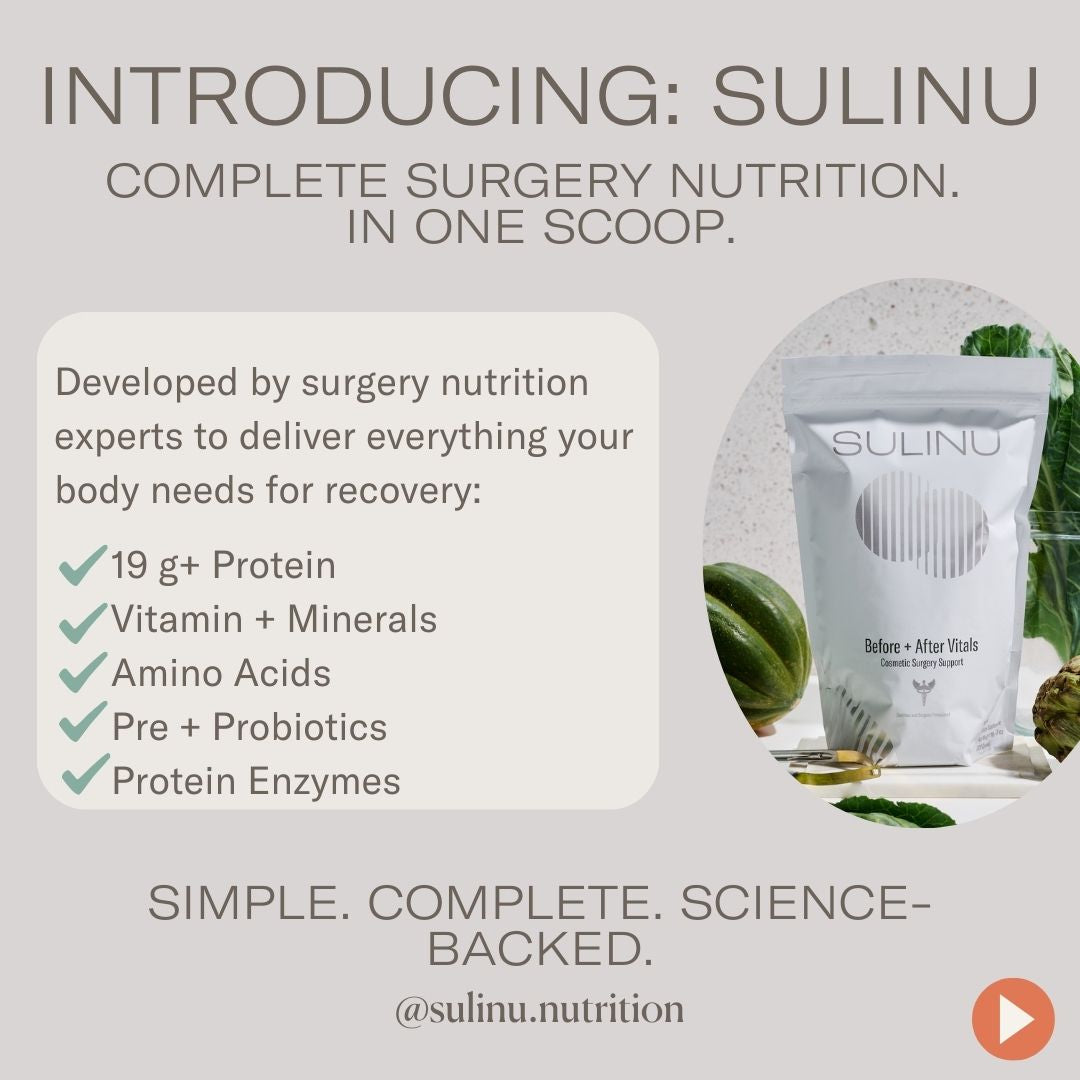

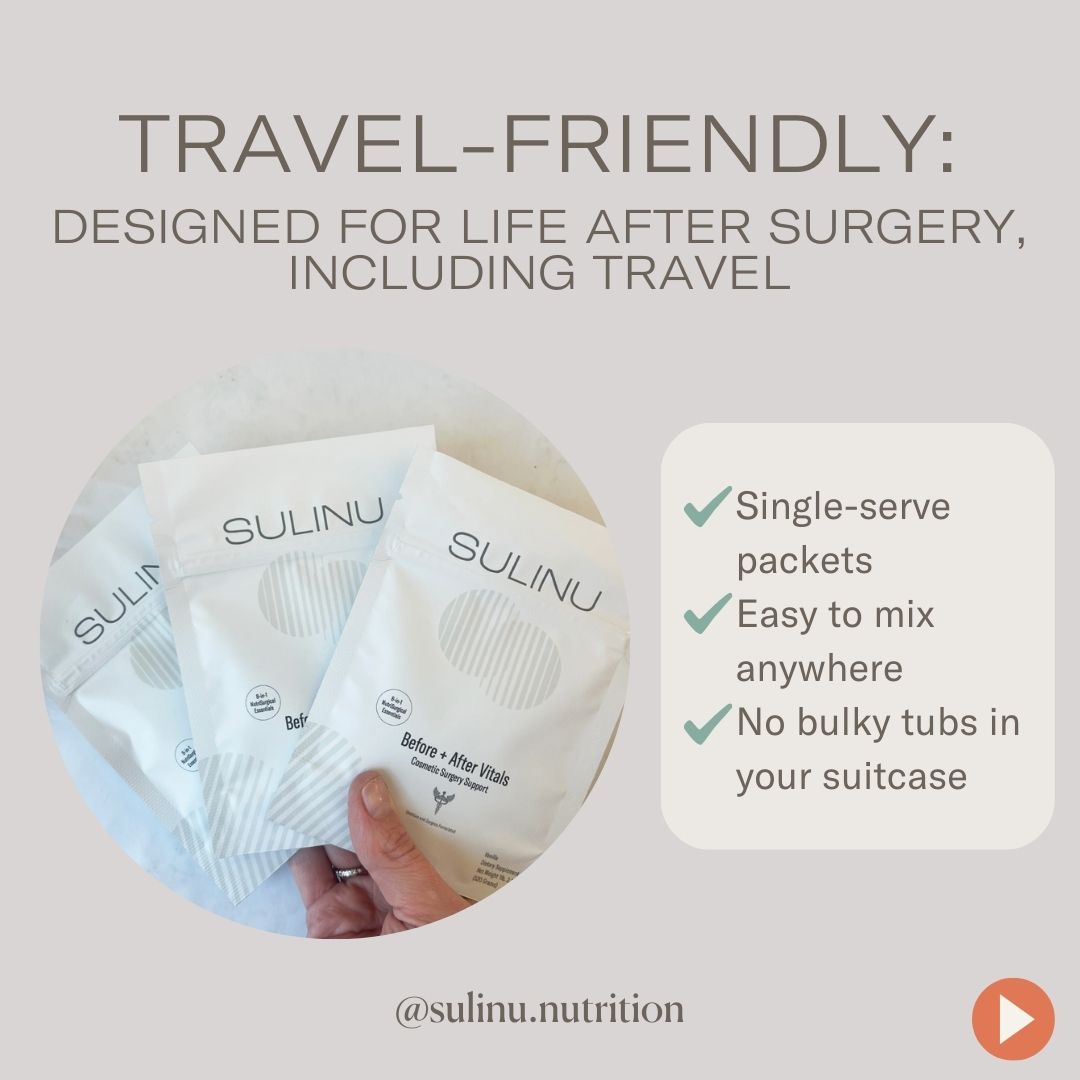
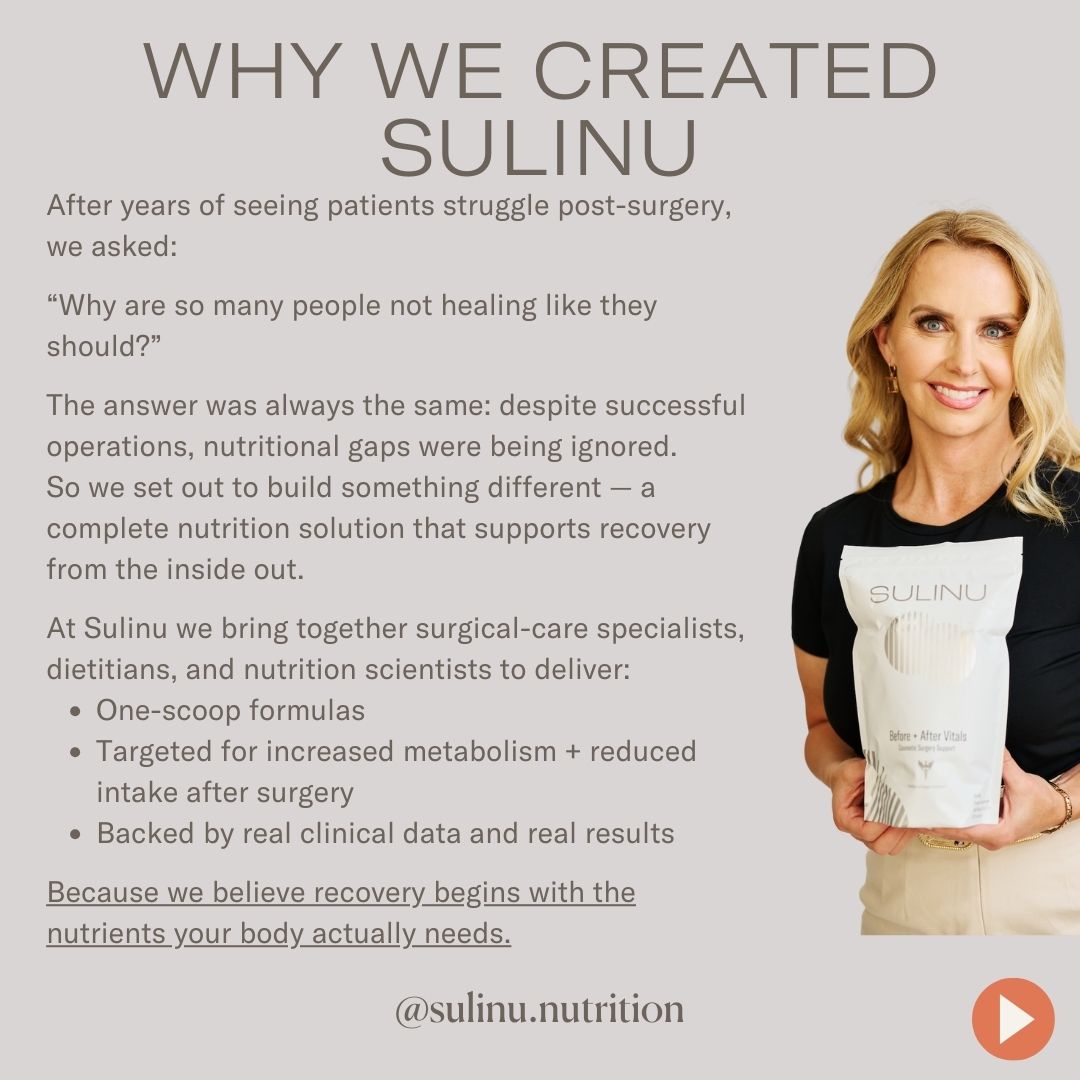

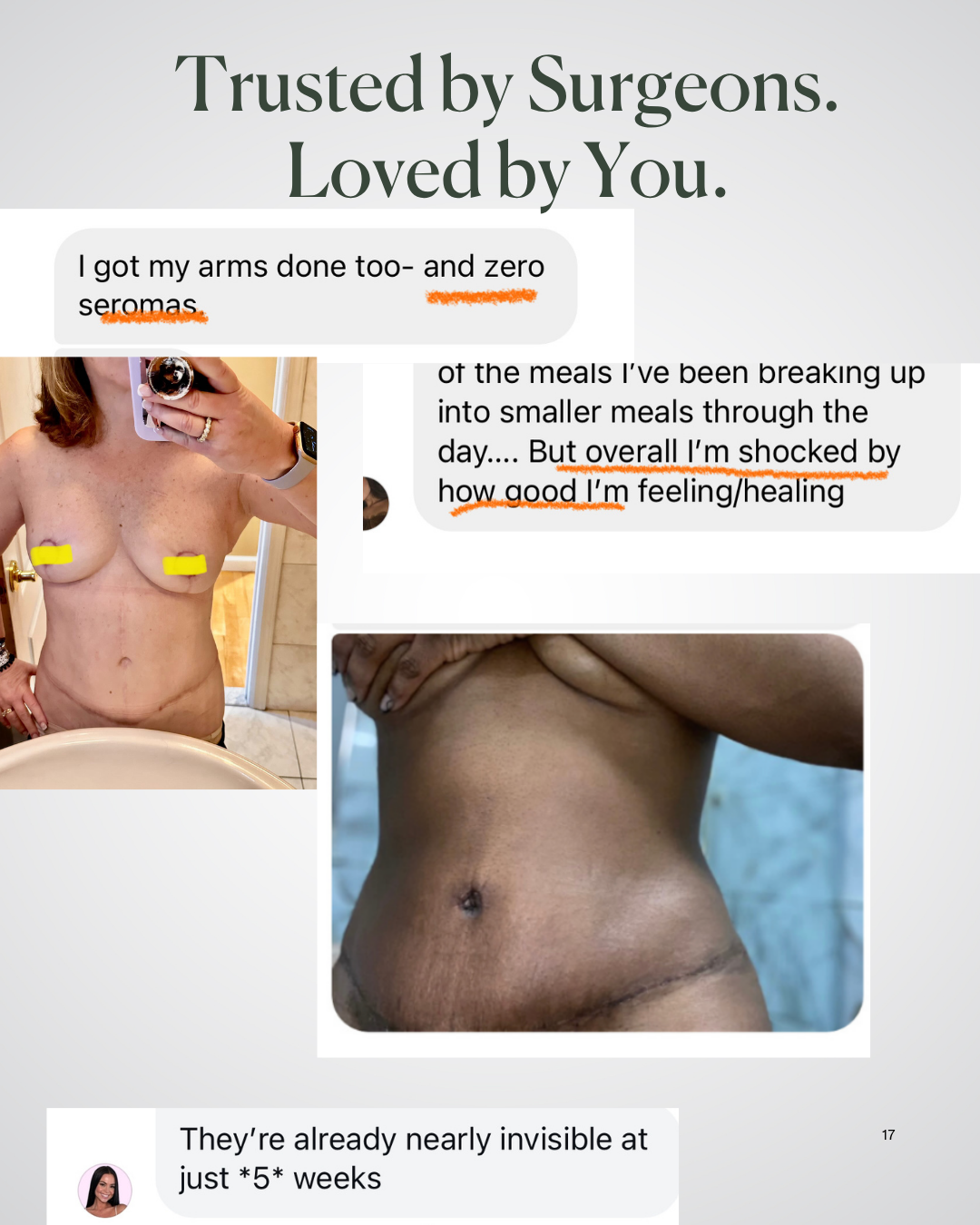
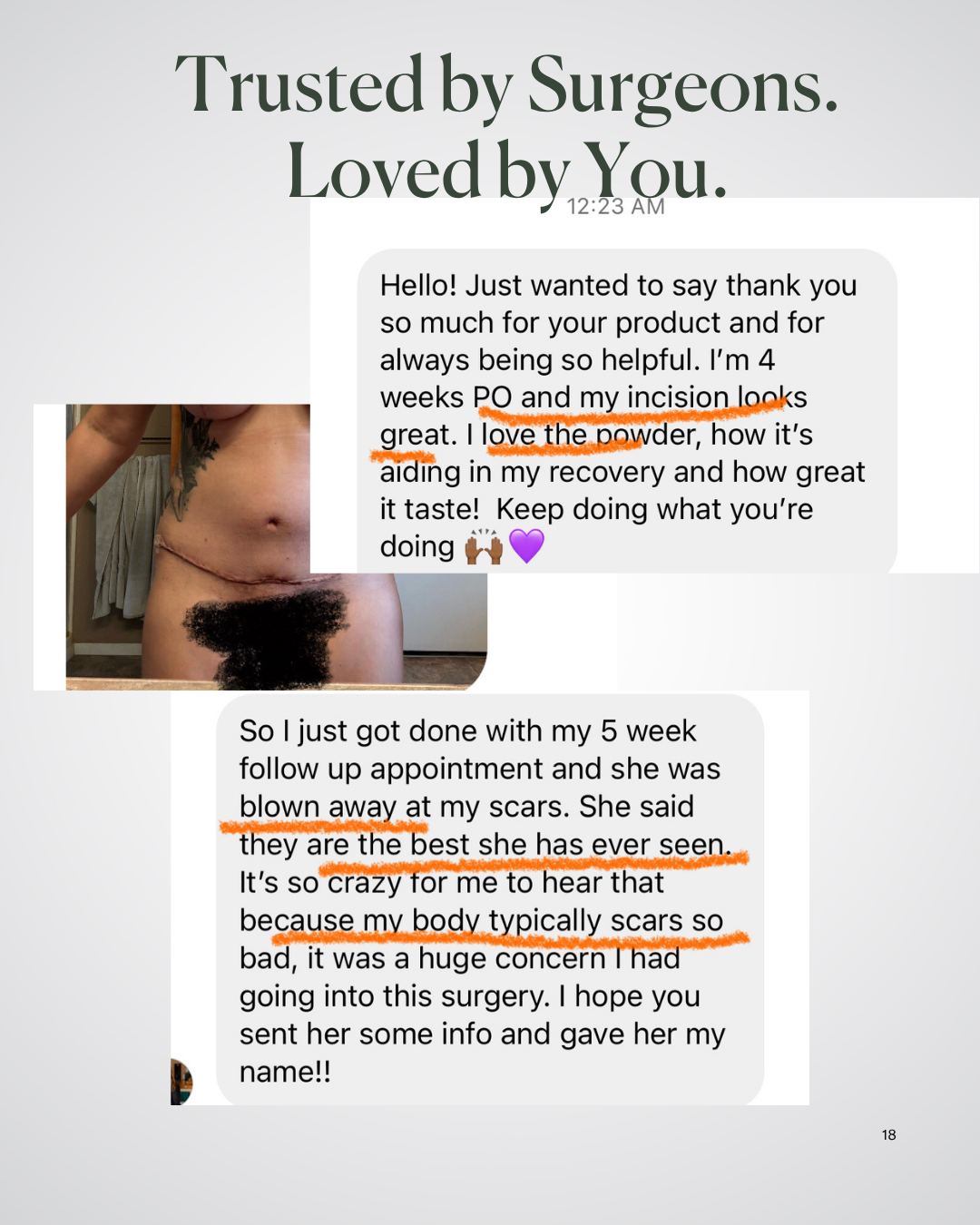
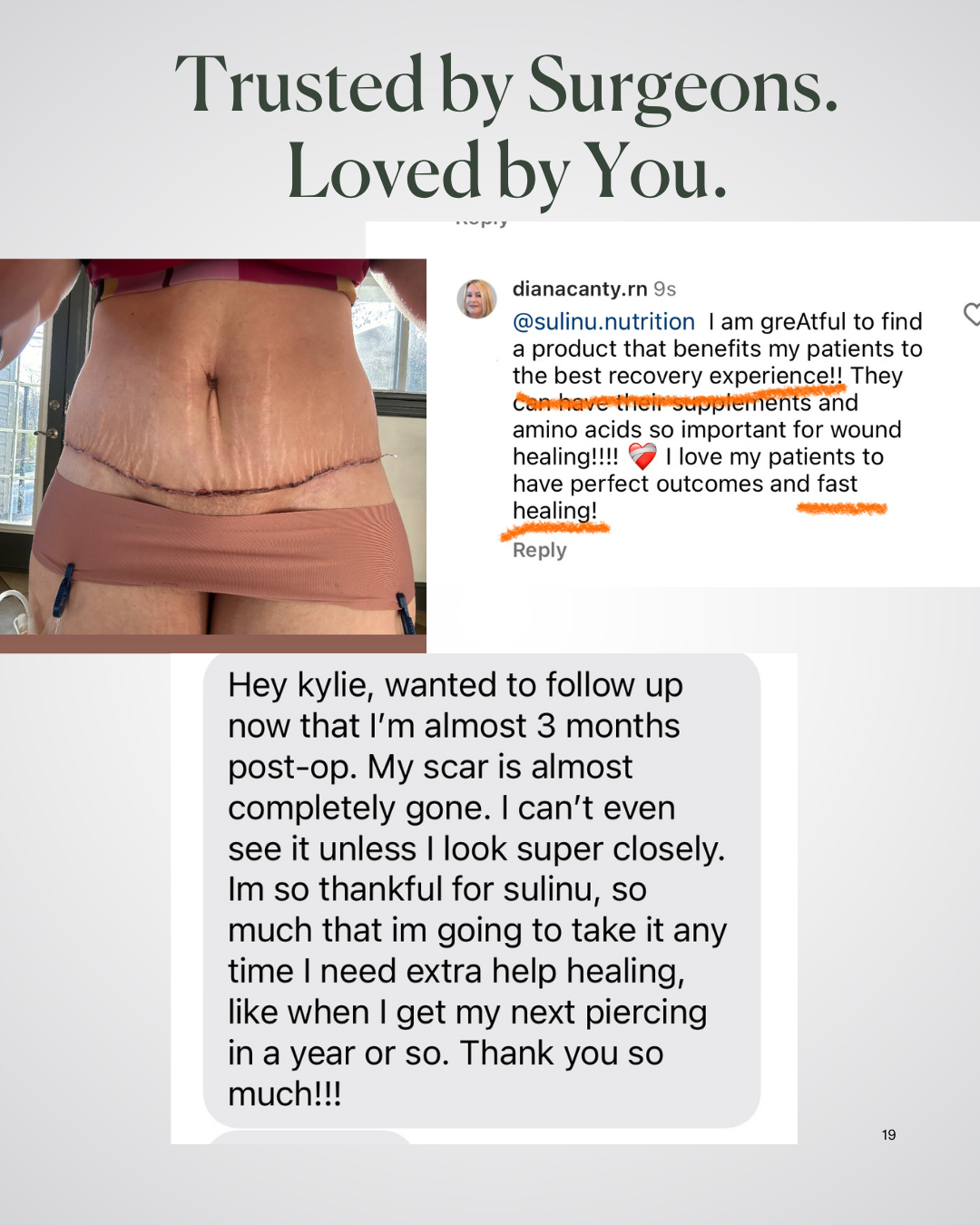
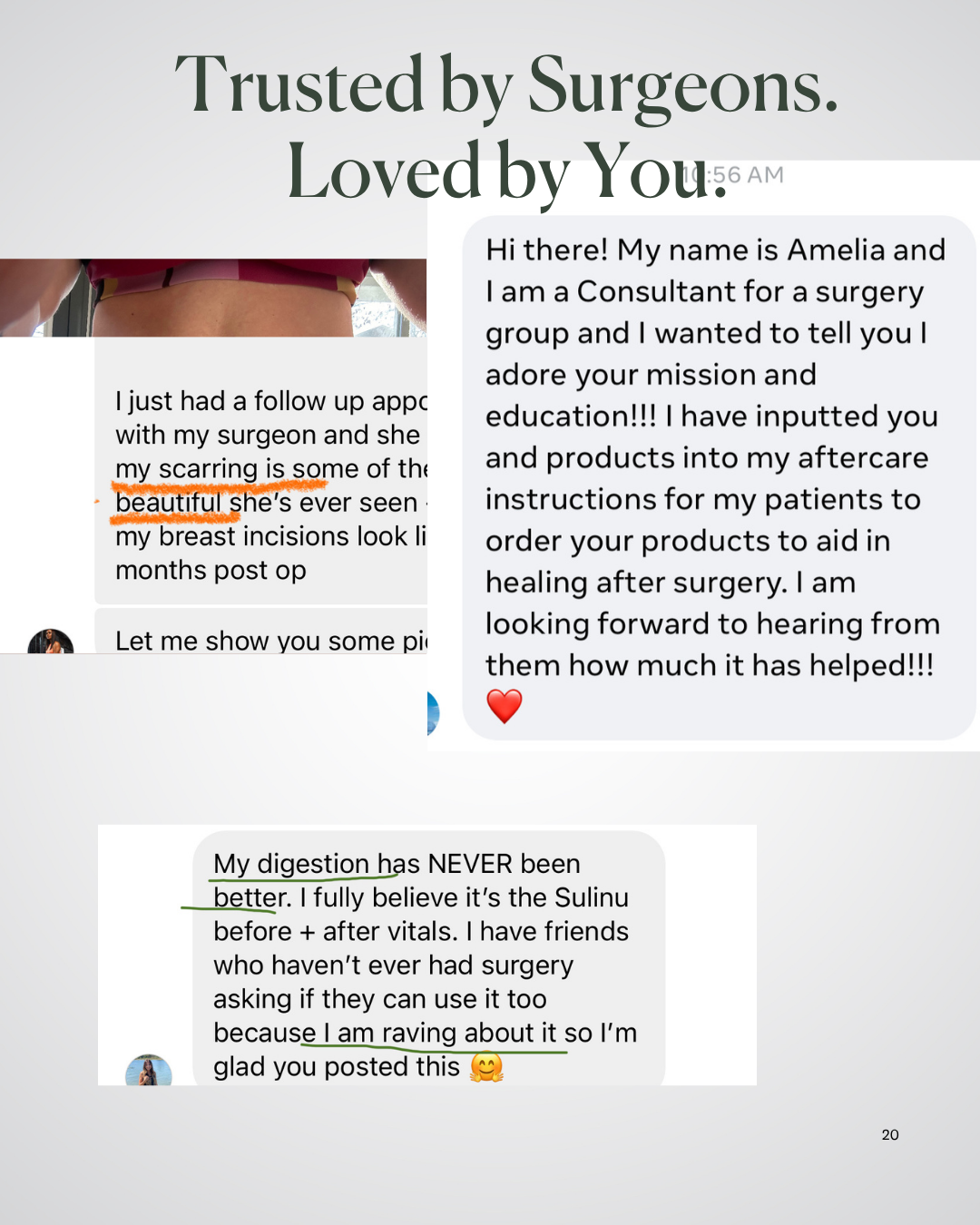
NUTRISURGICAL VITAMIN POWDER -(bag: Vanilla)
**FREE SHIPPING for orders over $150!!**
- 100% Money Back Guarantee
- Discreet Shipping-Your privacy is important
- We recommend 3 bags for any surgery for the best results
This Complete Surgery Powder gives you EVERYTHING you need IN ONE SCOOP.
Pre and Post Surgery Supplements for that near-invisible scar look.
"Can you believe it? [My incision scars] are nearly invisible at just 5 weeks!" -Jessie
Our pre and post surgery supplements are packed with vitamins for wound healing after surgery
- 3rd party tested
- Gluten-Free
- Vegetarian Whey
-
27 Surgeon-Approved Ingredients
- In bioavailable forms
-
5 Patented Ingredients
- Patented is the HIGHEST standard of ingredients
- Faster Incision healing
- Gut microbiome studied
- Clinically tested
- Sourced from Europe and Internationally
- Therapeutic Dosages
Perfect for:
- Before Cosmetic Surgery
- After Cosmetic Surgery
- Slow-to-heal incisions or wounds
- Using a GLP and needing extra nutrition
- Can begin taking at anytime on your surgery journey, EVEN if you are weeks after your surgery! Your scar is healing for a least a year after your surgery date.
How to use:
- Use 1/2 to 1 scoop a day. Max 1 scoop a day for at least 6 weeks postop.
- We recommend 3 bags: Use 1 bag before surgery and 2 bags after surgery
Nutrisurgical Vitamin Powder with Patented, Clinically-tested Ingredients.
All your Protein, Collagen, Amino Acids, MicroNutrients, Synbiotics and Enzymes in ONE SCOOP to give you a seamless recovery after cosmetic surgery.
Note: This product is also commonly used by GLP (Ozempic, Semiglutide, etc) patients to prevent nutrient depletion and Ozempic face
Our Survey Results*:
79% reported a beautiful incision
85% reported a faster recovery
90% liked the taste
X Gluten X Soy X Artificial Colors or Flavors X GMOs
*based upon our postop survey 2024
Introducing BEFORE + AFTER VITALS, the ultimate surgeon-endorsed nutritional supplement tailored exclusively for plastic surgery recovery.
Fears of infection, inflammation, slow-to-heal incisions, and bruising are taken head-on by this super fine, quick-to-dissolve powdered supplement. Add a delicious hit of vanilla flavor to your cold or warm drinks, smoothies, or culinary creations.
1 pouch is 20 servings.
ALLERGY info: Contains lactose. Product was processed in a facility that may also process eggs, peanuts, sesame, soy, tree nuts, shellfish, and other allergens.



